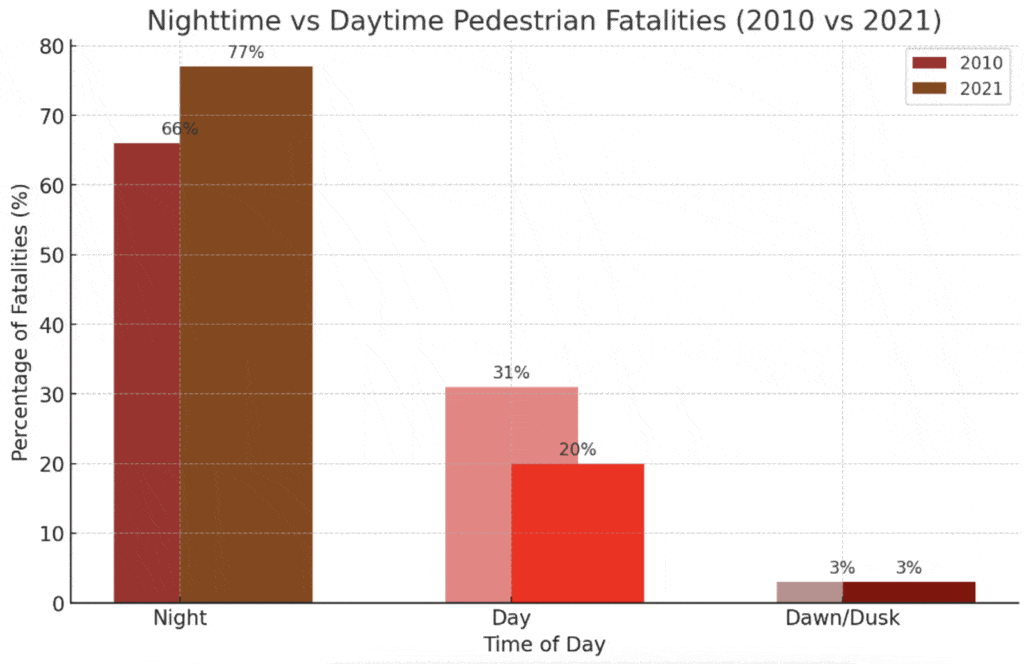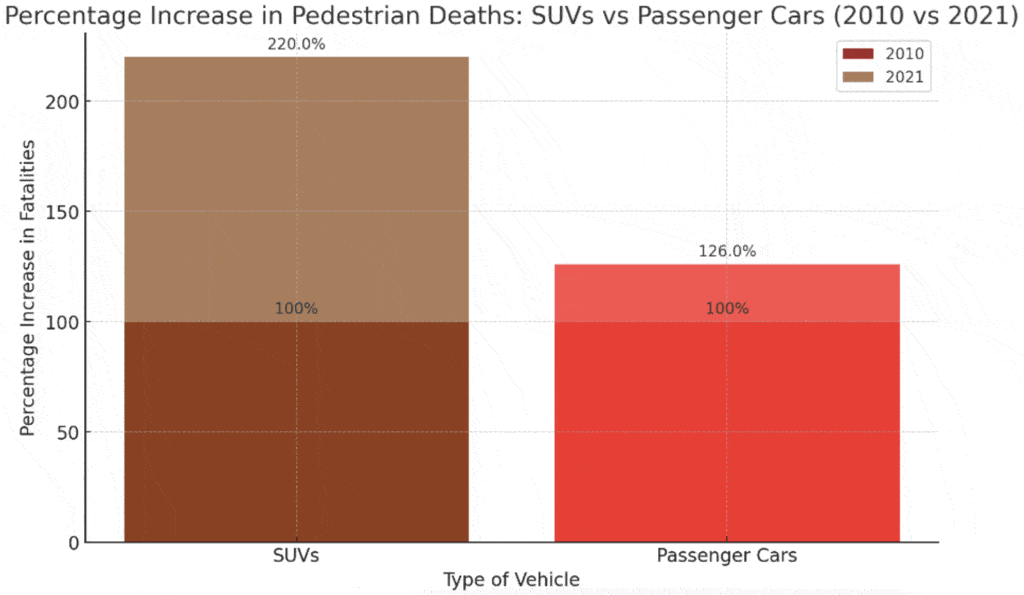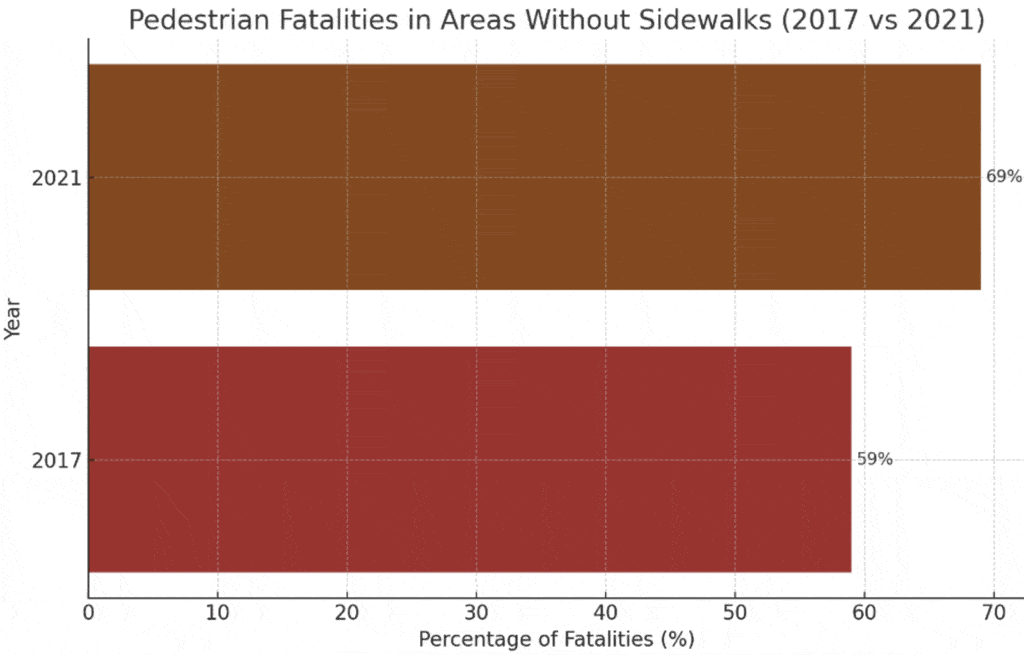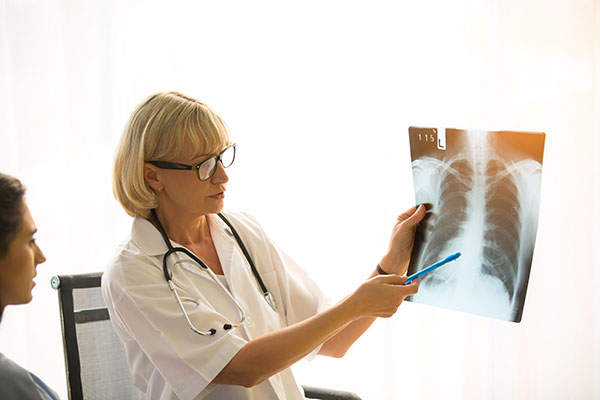
Pedestrian Accident Attorney in Denver
Denver Accident Attorneys for Injured Pedestrians and Cyclists
Serving Accident Victims and Families in Colorado
Were you hit by a car while walking or riding your bike in a Colorado community?
Your injuries can be permanently disabling. Talk to an attorney today.
It’s easy to see why Colorado residents and visitors enjoy walking and cycling in such a beautiful state. Our state’s many sunny days, open spaces, bike paths and pedestrian-friendly cities provide the perfect environment for enjoying the fresh air and mountain views. In some of the traffic-choked urban areas in the Denver metro, it’s often more practical and efficient—not to mention better exercise—to walk or bike the Cherry Creek Trail than it is to drive.
Despite the many benefits of walking and biking, these activities are not without certain risks. For bicyclists and pedestrians, one of the biggest dangers is cars and trucks on the road, often moving at high speeds.
Colorado’s traffic laws are designed to make the roads safer for both drivers and pedestrians. Yet each year, thousands of people are hit by cars or trucks while walking, jogging or cycling.
And as our state’s population grows, the problem is only getting worse.
Since 2009, the number of pedestrian-vehicle fatalities has nearly doubled in Colorado, according to the AAA Foundation for Traffic Safety and AAA Colorado. More pedestrians were killed in 2019 than in any year since 1990.
If a car, truck or any other vehicle strikes you while walking or riding your bike, the consequences can be devastating, if not fatal. In 2017, nearly 6,000 pedestrians were killed in traffic crashes in the United States—about 1 death every 88 minutes. An estimated 137,000 pedestrians were treated in emergency departments for non-fatal crash-related injuries.
If you or a loved one were hit by a car, then you need to know that a vast majority of pedestrian and bicycle injury cases involve negligence on the part of either the driver or the pedestrian. In negligence cases, compensation may be owed to the injured individual for medical expenses, property damage, loss of wages, pain and suffering and other personal injury damages.
To find out how much your pedestrian or bicycle injury case is worth, contact an experienced Colorado accident lawyer at The Babcock Law Firm today. We also specialize in hit and runs.
Schedule your free personal injury case evaluation now.
No cost – no commitment.
We’ll always be there for you through the whole process. Every step of the way.
“As an avid cyclist myself, I personally know the everyday dangers that bicyclists and pedestrians face on Colorado roads all too well. I founded The Babcock Law Firm to help injured Coloradoans fight back against negligent motorists and their insurers. Rest assured that we will never represent insurance companies or corporate America. We exclusively work with private citizens to provide the best possible legal representation in Colorado.”
Denver Accident Attorney Mack Babcock
Founder of The Babcock Law Firm
What is a pedestrian?
Legally speaking, a pedestrian is any person on foot—walking, running, jogging, hiking, sitting or lying down—who is traveling along or near a road or pavement. In modern times, the term “pedestrian” is also commonly applied to users of non-motorized modes of transportation such as a bicycle, scooter, skateboard or roller blades/skates.
New study finds U.S. drivers killed more than 7,500 pedestrians in 2022, the highest number since 1981
According to a new report by the Governors Highway Safety Association (GHSA), in 2022, pedestrian deaths in the United States reached 7,508, the highest number since 1981. The report also shows that pedestrian fatalities have increased by 77% since 2010, compared to a 25% rise in all other traffic-related deaths.
GHSA Chief Executive Officer Jonathan Adkins had this to say, “Every day, 20 people go for a walk and do not return home. These are people living their daily lives—commuting to and from school and work, picking up groceries, walking the dog, getting some exercise—who died suddenly and violently. The saddest part is that these crashes are preventable. We know what works—better-designed infrastructure, lower speeds, addressing risky driving behaviors that pose a danger to people walking. We must do these things and more to reverse this awful trend and protect people on foot. Enough is enough.”
Factors contributing to this increase included:
- Nighttime accidents (77% of fatal crashes in 2021)
- A sharp rise in deaths involving SUVs (up 120% in the last 10 years)
- A lack of sidewalks (69% of deaths in 2021)
Nighttime versus daytime
pedestrian fatalities

Key takeaways:
- Most pedestrian deaths happen at night.
- In 2021, 77% of these deaths occurred in the dark.
- About 20% of pedestrian deaths happened during the day, and 3% happened at dawn or dusk.
- From 2010 to 2021, nighttime pedestrian deaths increased by 86%.
- Daytime pedestrian deaths rose by 31% during the same period.
Fatalities caused by SUV drivers
versus passenger cars drivers

Key takeaways:
- SUV-related pedestrian deaths increased by 120% from 2010 to 2021.
- Passenger car-related pedestrian deaths increased by 26% during the same period.
Pedestrian deaths in areas without sidewalks (2017 vs 2021)

Pedestrian deaths by race & ethnicity

Data sources: Governors Highway Safety Association
Other key factors in pedestrian road safety
To begin tackling the problem of pedestrian accidents, it’s crucial to understand some other key factors impacting safety on U.S. roads.
A. Non-freeway arterial roads are risky
In 2021, these roads were where 60% of all pedestrian deaths happened.
What are non-freeway arterial roads?
These major roads or highways aren’t freeways but are still used for significant traffic flow. These roads typically:
- Connect major points of interest. They link cities, towns and important areas like airports and shopping centers.
- Have higher speed limits than local streets. While they’re not as fast as freeways, they still allow for relatively high-speed travel.
- Have more lanes than local streets. This helps handle large traffic volumes.
- Often lack features that make roads safe for pedestrians. This includes things like frequent crosswalks, pedestrian signals, and lower speed limits.
Because they’re designed more for vehicle efficiency and speed than pedestrian safety, these roads can be particularly dangerous for people walking, especially where pedestrian crossings or sidewalks are limited.
B. Speeding dramatically increases danger
Even though only 8.1% of pedestrian deaths in 2021 involved speeding, the risk of someone dying if hit by a car increases significantly as the speed increases.
At 23 mph, the risk is about 10%, but jumps to 90% if the car’s going 58 mph.
C. Freeways aren’t safe for pedestrians either
About 18% of pedestrian deaths were on freeways. This includes people who might’ve left their cars because of a breakdown or emergency, like stranded drivers, tow truck drivers, and first responders.
Despite the Move Over laws to protect them, over 1,300 pedestrians still die on freeways, showing that we need to do more to keep these areas safe.
Understanding move over laws
Move Over Laws are in place to safeguard individuals such as emergency responders or stranded drivers on roadways. These laws require drivers to reduce speed and shift to a different lane when approaching stopped emergency vehicles, such as police cars, ambulances and tow trucks, as well as stranded motorist vehicles.
Who is at fault in a pedestrian or bicycle accident?
Mixing vulnerable pedestrians and fast-moving vehicles is a dangerous combination. The well-known rule that the pedestrian always has the right of way is generally true, but there are exceptions. In the event of a car accident with a pedestrian, determining who is at fault is often the biggest challenge because it depends on the details of the incident.
All drivers have what is called a “duty of care.” This means that the driver is held to a certain standard of what a normal, cautious and reasonable person would do in similar circumstances. For example, responsible drivers take extra precautions when pedestrians are nearby. A person may be driving the speed limit, but if he or she sees a toddler coming into the road then they have a duty to slow down and come to a stop—even if the vehicle technically has the right of way.
However, a pedestrian can be held liable for an accident if the vehicle is driving reasonably safely but the pedestrian acts in a careless way that makes it impossible for the driver to avoid hitting the individual. A pedestrian jumping out in front of a moving vehicle or walking the street at night wearing dark clothing are both examples of actions that may cause them to share some of the blame for a pedestrian-vehicle collision.
How to establish liability in your Colorado pedestrian or bicycle accident case
Before compensation is awarded in a personal injury case, the plaintiff must prove that the defendant was at fault for the accident in the first place. In Colorado, if a driver is to blame for hitting a pedestrian or bicyclist, then the injured pedestrian has grounds for seeking personal injury damages.
However, Colorado is a “contributory negligence” state, meaning that accident victims—including cyclists and pedestrians—are only allowed to recover damages so long as they were less than 50 percent at-fault for the accident.
There are times when a judge or jury decides that both the pedestrian and driver are equally at fault in an accident, indicating that both parties displayed negligent behavior. Since Colorado is a modified comparative fault state, this scenario would mean that a pedestrian’s damages would be reduced by their perceived degree of fault.
So, for example, if you are seeking $100,000 in damages but are found to be 50 percent liable, you could only recover $50,000 in compensation. But if you were found to be 51 percent liable, you wouldn’t be able to recover any compensation. This is why hiring skilled legal representation is so important in such situations.
Our experienced Colorado injury attorneys are deeply knowledgeable in how negligence and liability laws impact bicycle and pedestrian accident litigation. We can help to investigate the accident, determine fault and fight to secure your rightful compensation.
Colorado pedestrian laws
In order to correctly determine who is to blame (liable) in a pedestrian accident, one must have a detailed and complete understanding of Colorado’s laws concerning pedestrians. Most of these laws can be found in Colorado Revised Statutes 42-4-802.
Here are a few of the most important and commonly cited laws:
- Motorists (drivers) should yield the right of way when pedestrians are in the same half of a crosswalk as the vehicle.
- If a vehicle stops to allow a pedestrian to cross at a marked or unmarked crosswalk, other drivers must stop as well. They should not pass or go around the stopped vehicle.
- Pedestrians should use designated crosswalks at intersections with traffic signals.
- Pedestrians should yield to all vehicles if crossing at an unmarked crosswalk (jaywalking) or if there is a pedestrian tunnel or bridge they could use instead.
- Pedestrians must obey Walk and Don’t Walk signals and other traffic control devices at intersections when present.
- Pedestrians shouldn’t suddenly jump into the path of a moving vehicle so close that the driver cannot stop.
- Pedestrians should not cross an intersection diagonally unless expressly permitted.
Colorado bike laws
Nationwide, there were about 47,000 injuries and 857 deaths caused by bicycle-vehicle accidents in 2018, according to the NHTSA, many of which could have been prevented if the parties involved had a greater awareness of bicycle safety.
It’s important to understand that bikers share all the privileges that drivers of other human-powered vehicles have, meaning that if you’re cycling, you have the legal right to a place on the road, and car drivers wishing to pass you must do so safely and lawfully.
However, along with this right, bikers are also obligated to fulfill the responsibilities and duties of vehicles. Failure to comply with these road rules can result in traffic citations:
- Bicyclists must ride on the right side of the road, never against traffic.
- Bicyclists must ride on paved shoulders and bike lanes when present.
- Bicyclists are required to obey all traffic laws, signs and signals.
- Bicyclists must use hand signals to indicate left or right turns no less than 100 feet before the intended turn (left arm straight out for left and at a 90-degree angle for right).
- Bicyclists are allowed to ride no more than 2 abreast and must return to single-file if traffic is impeded or on curvy canyon roads.
- Bicyclists must use headlights and tail light reflectors at night.
- Bicyclists must always yield to pedestrians, whether along a sidewalk, pathway, or through a crosswalk, and also make an audible signal before passing them.
- Bicyclists must keep at least one hand on their handlebars at all times.
If a cyclist fails to follow one or more of these laws, causing an accident with another vehicle, they may be held at least partly liable for the injuries and damages that ensue.
We encourage both cyclists and drivers alike to learn more about Colorado bike safety laws before going out on the road.
Common causes of pedestrian and bicycle accidents
Any driver who fails to be adequately aware of their surroundings is, more often than not, the main cause of pedestrian accidents. Perhaps the driver approached an intersection too fast, or they failed to properly yield to pedestrians while going through a crosswalk. Accidents of this nature are especially common in large cities like Denver and Colorado Springs, as well as college towns like Boulder, Greeley and Fort Collins. Sadly, driving under the influence is another big culprit of pedestrian-vehicle collisions.
Other common culprits of pedestrian and bicycle accidents in Colorado include:
- Texting and driving (distracted drivers)
- Improper bike lane use
- Unmarked crosswalks
- Quiet vehicles
- Pedestrian or cyclist wearing dark clothes
- Poorly marked construction zones
- Not obeying traffic signals
- Driving at an excessive speed
- Driving too fast in a school zone
- Not looking when backing up
Pedestrian accident prevention tips
Our ability to reverse the rising trend of pedestrian and bicycle accident fatalities in Colorado and nationwide rests on drivers and pedestrians alike to be vigilant and follow basic recommended safety tips.
How to avoid hitting a pedestrian
With children facing the greatest risk in pedestrian accidents, Colorado law imposes a higher duty of care on drivers in areas where children are expected to be present. It’s sad to think that simple safe driving practices can prevent many serious and fatal accidents from happening.
- The best way to avoid hitting a pedestrian is to be a “defensive driver” at all times. Take extra precaution and care when driving near pedestrians, cyclists and especially when children or the elderly are present.
- When passing a cyclist or pedestrian, keep a close eye on them. Even if it seems they are staying to their side, they could dart out when you least expect it.
- Drive slowly near pedestrians. Understand that they are much more vulnerable than someone in a car. People have even been killed when struck by a driver who was going as slow as 10 mph.
What are ways pedestrians can avoid being hit?
- Always cross the street at a designated crosswalk
- Wear bright clothing so drivers can easily see you
- Walk on a sidewalk when available, or as far away from the road as possible
- Plan your route before you go to find the safest path
- Walk facing traffic so you can see if a car seems to be swerving towards you
For more safety tips for pedestrians, cyclists and motorists, check out the following resources:
What to do after a pedestrian or bicycle accident with a car (5 steps)
What happens if a car hits a cyclist or pedestrian?
Getting struck by a vehicle is frightening and dangerous, especially for pedestrians. Pedestrians and cyclists are particularly vulnerable to drivers who aren’t paying attention to the road because they are less protected and more easily overlooked than other vehicles.
Many fatal pedestrian accidents lead to wrongful death claims or even vehicular manslaughter criminal cases if the person who was hit died in the collision. Those who are fortunate to survive a tragic pedestrian-vehicle collision typically deal with chronic pain, suffering, debilitating medical expenses and lost wages for weeks, months or even years.
If you were hit by a car while walking or biking in Colorado, follow these steps to protect your health, safety and rights:

1. Call the police.
After an auto accident, it is important to contact law enforcement as soon as possible. Calling the police will also notify emergency medical personnel to be dispatched to the scene of the accident, so you can begin receiving treatment as quickly as possible if needed.
Contacting the police is also necessary from a legal standpoint. Once an officer arrives, all parties involved in the crash will be able to present their sides and the incident will be documented.
You will probably have to fill out a police report at the scene of the accident or later at a nearby police station, which will contain valuable information and evidence that your attorney can use to establish fault.

2. Gather information and evidence.
After the authorities have been notified and only if you are not seriously injured, try to gather as much evidence and information as possible about the crash. Information to collect includes:
- Names and contact information of the driver and passengers involved in the accident, as well as any bystanders or eyewitnesses.
- Pictures of the accident site and any injuries or damage sustained.
- Clothes and other items present at the scene of the accident can be used as future evidence.
Also, write a brief summary or description of the events that led up to and occurred after the accident. Over time, your memory of the accident can get muddled or lost, so it is imperative to record what occurred as soon as possible in order to accurately recall the incident in the future.
NEVER apologize or discuss fault with the other party involved in the accident. Anything you say and do (even out of politeness) can be used against you in a future claim.

3. Seek medical attention immediately.
If you were struck by a car, it is especially important to seek the help of a medical professional right away. Even if you think you were unharmed, seeing a doctor or physician is important for both your overall health and in making a compensation claim.
Sometimes, serious conditions like internal bleeding, whiplash or a concussion are not evident at first due to delayed onset symptoms and the adrenaline coursing through a person’s body immediately following a collision. Only by seeking medical attention can you be sure that you sustained no serious injuries.
Also, be sure to keep all paperwork and medical records to be used in your claim or lawsuit.

4. Communicate with the insurance company.
As the pedestrian hit by a vehicle, you will need to file an insurance claim against the at-fault driver’s insurance company and you should be ready to answer questions from the adjuster.
Again, do not discuss fault, make any statements, sign any forms, or agree to a settlement without first obtaining your own legal counsel.

5. Obtain legal representation.
If you’re injured in a pedestrian or bicycle accident, it’s extremely important to contact a personal injury attorney who specializes in these types of cases soon after you’ve seen a doctor. This is true even if you feel as though you may have been partly to blame because you were jaywalking or ran a traffic light when you were hit by a car.
It’s important to understand that the driver may still be legally liable if they failed to exercise a reasonable level of care by forgetting to use a turning signal, not stopping fully before a right turn at a red light or driving too fast for the weather or traffic conditions—to name just a few examples.
What’s more, insurance companies frequently try to minimize pedestrian accidents claims by disputing driver negligence, casting blame on the pedestrian or proposing an unreasonably low settlement offer quickly before the injured person knows the full extent of their injuries.
What happens if you hit a pedestrian or cyclist with your car?
Help! I hit a pedestrian with my car. Now what?
If you were the driver who accidentally struck a pedestrian or cyclist with your car, it’s important to immediately stop your vehicle and check on the person you hit. Failing to stop at the accident scene is a criminal hit and run offense that can result in serious penalties like fines, probation, having your license revoked and even jail time. Administer assistance to the person you hit if you can, and call 911 to notify first responders.
Before you leave the crash scene, be sure to cooperate with law enforcement to help file a police report, and gather evidence and information from the person you hit and any eyewitnesses. Also, be sure to notify your insurance company as soon as possible so that they aren’t surprised when the pedestrian or cyclists files a claim.
What happens if a cyclist hits a pedestrian?
If you were riding your bicycle and crashed into a pedestrian, you would need to follow the same steps you would if you were driving a car—namely:
- Stop
- Render aid if the pedestrian is seriously hurt
- Call 911 to notify first responders
- File an accident report
- Gather evidence and information
Most likely, you will not need to notify your auto insurance company because such accidents will likely not be covered since no motor vehicle was involved. If the pedestrian decides to sue you for personal injury damages, then you should consult with your own attorney for legal advice on what to do next.
Why hire a Colorado pedestrian injury attorney?
It is virtually impossible to ensure that you are getting fair compensation for your injuries without the help of a lawyer who has decades of experience dealing with insurance companies and pedestrian accident cases.
The outcome of your case will depend on a careful analysis of the facts of your accident and the resulting injuries. These facts need to be determined immediately — before witnesses forget important details and evidence fades.
At The Babcock Law Firm, your dedicated lawyer will help determine all avenues for recovery of damages and compensation. There may be other options for recovery in addition to the driver of the car or truck. Our pedestrian accident attorneys bring decades of expertise and experience to your case, helping you build a strong argument and recover the best possible outcome.
Talk with a pedestrian accident attorney today – A FREE, no-risk consultation
If you were struck by a vehicle while walking or riding your bicycle, it’s in your best interests to speak with our knowledgeable attorneys as soon as possible — and here’s why:
The sooner you file a claim for damages, the sooner you can receive compensation for your medical expenses, lost wages and more. Any delay in filing an injury claim can put your case in jeopardy.
We invite you to discuss the details of your accident with a Colorado pedestrian accident lawyer at The Babcock Law Firm. As an avid cyclist himself, attorney R. Mack Babcock is committed to representing the interests of pedestrians and cyclists hurt by negligent motorists. Our team’s mission is to help you secure the best possible outcome in your case.
Serving Injured Workers Throughout Colorado
From our office in Denver, we represent injured workers across the state—including in Colorado Springs, Littleton, Boulder, Aurora, Broomfield, Louisville, Lafayette, Lakewood, Golden, Thornton, Westminster, Longmont, Loveland, Fort Collins and many other Colorado cities.


